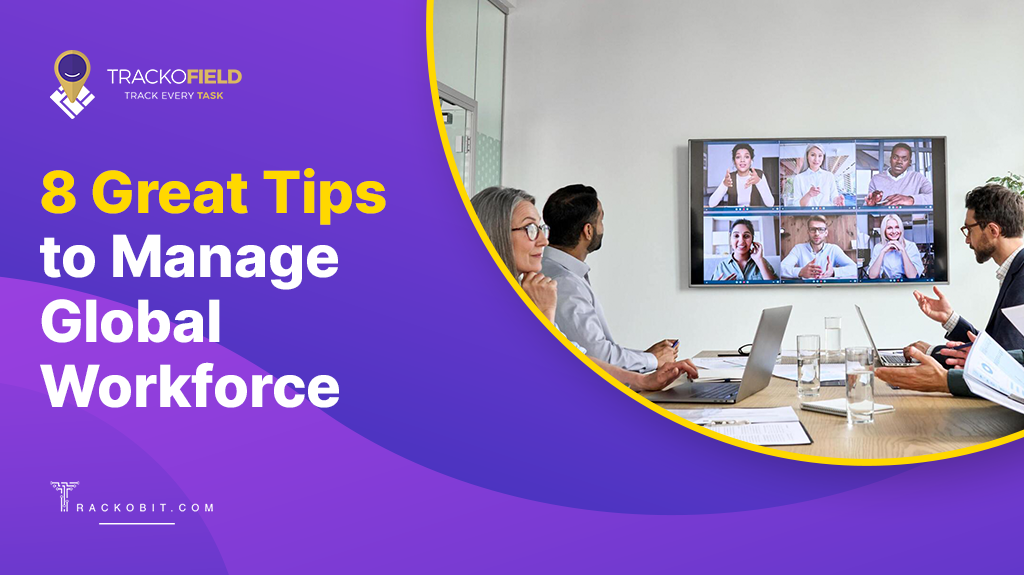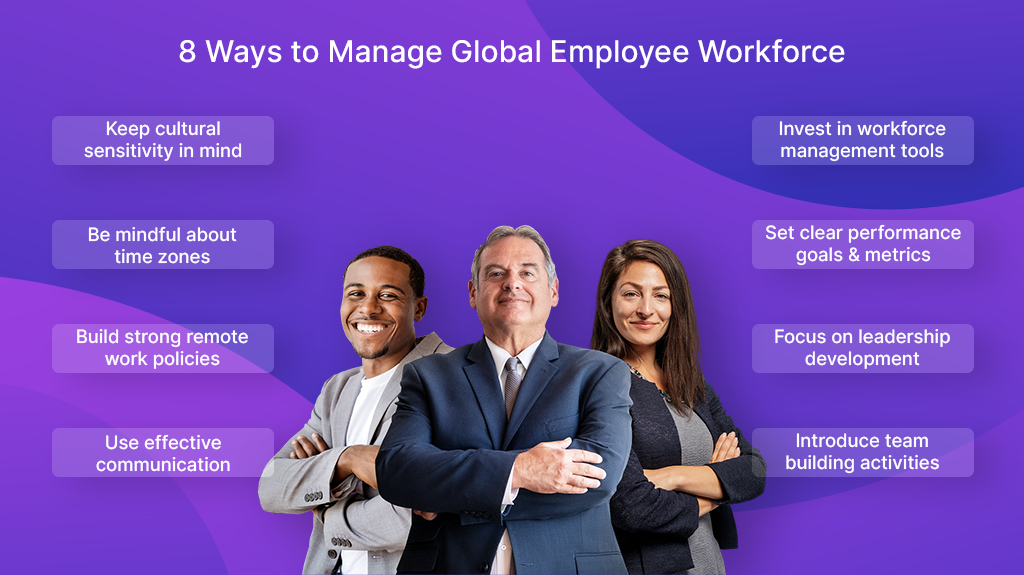-
TrackoBit
Manage commercial vehicles with the new-age Fleet Management Software
TrackoBit -
TrackoField
Streamline your scattered workforce with Field Force Management Software
TrackoField -
Features Resources
-
Blog
Carefully curated articles to update you on industrial trends. -
White Paper
Insightful papers and analysis on essential subject matters. -
Glossary
Explore an alphabetical list of relevant industry terms. -
What’s New
Get TrackoBit & TrackoField monthly updates here. -
Case Study
Explore the cases we solved with our diverse solutions. -
Comparisons
Compare platforms, features, and pricing to find your best fit.
-
About Us
Get to know TrackoBit: our team, ethos, values, and vision. -
Careers
Join the most dynamic cult of coders, creatives and changemakers. -
Tech Support
Learn about our technical support team and services in detail. -
Events
Check out the exhibitions where we left our marks and conquered. -
Contact Us
Connect with us and let us know how we can be of service.
8 Strategic Ways to Manage Global Workforce
- Author:Nandita Gupta
- Read Time:10 min
- Published:
- Last Update: April 30, 2025
Table of Contents
Toggle
Find 9 smart ways to manage the global workforce irrespective of their cultural barriers, differences in work ethics, and policies. Don’t miss the best workforce management tools listed!
Table of Contents
Toggle
Do you know there are almost 6,500 active tongues globally? Communication barriers are one of many challenges of managing a global workforce. Managing a global workforce with staff from various cultures, backgrounds, and economies is like swallowing a hard pill. Everyone possesses a different learning curve, work ethic, competitive spirit, and even emotional quotient.
For instance, managing field forces in China is different from managing them in Mexico. How so?
Managing field forces in China and Mexico differs due to cultural differences. Like in China, hierarchy is important, which is why communication happens to be indirect. In Mexico, interpersonal relationships matter too, and a bit of an informal approach is acceptable too.
That’s why understanding local regulations, cultural differences, and work ethics is very important to manage a global workforce.
Let’s dissect 8 smart ways with which you can effortlessly lead an employee workforce from across the globe.
What is a Global Workforce?
A global workforce is a composition of team members hailing from different countries or regions from across the globe. Organizations tap at the international talent market across countries and regions divided by cultures, ethnicities, and work backgrounds to find more skilled and efficient resources.
Organisations build such an employee workforce on purpose, which is to experience a wide talent pool that’s
- Skilled and equipped with better knowledge
- Have better iQ and problem-solving ability
- Quite economical (thanks to currency differences)
- Competitive and highly driven
8 Tips to Manage Global Employee Workforce (Without any Disparity)

Managing a global workforce comes with its own set of perks and perils. Here are 9 tips that work best to manage every one with unity:
1. Keep Cultural Sensitivity in Mind
As a manager, it’s important that you recognise and understand cultural sentiments since you will be having people working from different geographical backgrounds.
Make sure to:
✓ Keep your communication style – formal and unbiased.
✓ Plan holiday calendars, including festivals observed in different regions or religions.
Also, provide cultural sensitivity training where both employees and managers are taught to treat everyone equally and humbly. This will help foster a more inclusive and understanding work environment – for all.
2. Be Mindful About Time Zones
You will be amazed to know that there are 24 different time zones globally!
Recognize and build resilient working environments according to different time zones. Most importantly, schedule meetings or task deadlines in a way different team members can comply with according to their time zones.
You must leverage workforce management tools that can help with seamless communication and collaboration (by considering different time zones).
3. Build Robust Remote Work Policies
Formulate clear and comprehensive remote work policies defining the company’s long-term objectives, performance metrics, and guidelines for remote employees in different geographies.
4. Use Effective Communication Methods
Use different methods to communicate effectively with your staff, which are available globally. You can use video conferencing and globally used messaging apps like Skype to do so.
In case you have a maximum field force operational on client sites, having an online collaboration platform like comprehensive field force management software can help. It will help deploy shifts and even facilitate smooth communication with field staff.
Make sure to establish clear communication channels that help everyone stay in the loop and informed.
5. Invest in Robust Technology Infrastructure
Time to put a dent in your bank (not heavily). Make sure to invest in secure and reliable technology infrastructure that helps make remote working effortless and stress-free. This can include setting up robust internet connections, VPNs (virtual private networks), and work management and collaboration tools.
In case you have a huge global workforce comprising majorly field staff, make sure to onboard the following 4 types of software from TrackoField:
⏩ Leave & Attendance Management Software
With this software, you can accurately track and report the attendance and work hours of field staff based on their locational movements. The system lets employees mark their attendance by two means mainly:
- On-site clock-in and clock-out – They can clock in and clock out only upon reaching or exiting the client site or field. This helps make sure that they reach the assigned task location and helps prevent proxy attendance marking.
- Visual verification – The field employees can simply upload their snap from the executive app upon reaching the client site. The clicked picture snap helps verify the executive’s presence at the client site as it contains the current latitude-longitude, location, and time of clicking the picture.
🔍 Moreover, the software is adept in auto-managing leave requests and quotas based on pro-rata, half-day, short leaves & 50+ customarily defined conditions. It takes leave policies and holiday calendars into due consideration too.
⏩ On-Field Expenses Management Software
Having expense management software will simplify the process of expense claiming and reimbursement process for diversely located staff. It will make it effortless to:
- Upload expense claims with receipts.
- Set a hierarchy of managers who would approve or reject the claim.
- Put a cap on travel or any on-the-way expenditure.
- Segregate expenses under different heads, such as – travel, food, stationery, and miscellaneous.
⏩ Task Management Software
The task management software automates task delegation and helps keep track of task progress in real-time. It lets field managers:
- Allocate routine to any urgent or ad-hoc tasks.
- Access an in-built calendar template to review weekly and monthly planners.
- Access target vs achievement report (to know how many tickets were closed).
- Time and location checks to know when and where the task is starting and ending.
⏩ Order Management Software
If you have a field force obligated to take order requests in any domain, be it pharma or any utility, order management software is the best bet. The software makes it convenient for your geographically divided field staff to:
- Effortlessly place sales orders from clients (including routine orders or ad-hoc orders)
- Get approval on sales orders from managers in real time
- Review the extensive product list to have a look at inventory levels
- Set custom discounts and pricing on orders taken
6. Set Clear Goals & Performance Metrics
Set up clear objectives, common goals, and metrics – that are achievable and measurable. Align your whole remote team with them. This will drive them towards a common purpose and stay focused on simply delivering the output (while leaving behind their cultural differences).
Set up S.M.A.R.T. goals which are expanded as:
- S -Specific
- M- Measurable
- A- Achievable
- R – Relevant
- T – Time-bound
Suppose you are a field service business, you can try to set your goals in the following manner:
| Types of Goals | Meaning | Example |
| S – Specific | Set specific or clear goals. | Don’t say we need to increase sales: say we need to increase sales by 10% in the next quarter. (Have a number in mind) |
| M – Measurable | Set goals that reflect quantifiable output (not just hard statements). | Don’t say we have to close customers’ tickets. Say we have to close a maximum of 20 out of 30 tickets this week. |
| A – Achievable | Set goals that you can achieve at the end of the day (without tall claims). | Don’t burden your field staff by saying they have to visit 80 clients (that’s unrealistic!) |
| R – Relevant | The goals or metrics you set must be aligned directly with the organization’s vision and mission. | Instead of asking employees to increase customer satisfaction, ask them to focus on timely closing the customer tickets and bringing maximum closure. |
| T – Time-bound | Ensure the tasks you set are achievable within the set timeline. | Set time-bound tasks like quantifying timelines for sales targets you want your field staff to fulfill. |
Further, you must divide your metrics into the following 4 categories.
→ Work quality metrics – These deal mainly with the work efficacy, quality, and efficiency to match with set standards, benchmarks, and customer satisfaction.
—> Work quantity metrics -These deal with how many tasks are completed in the sense of quantity. Suppose you give the task of closing 30 tickets to employees in a week. That 30 defines tasks at a quantifiable level.
—> Work efficiency metrics –These deal with how tasks were performed in shorter TAT or within the prescribed deadline.
—-> Organizational performance metrics – These deal with how positively assigned tasks are impacting the organizational output.
🔍 Bonus Tips
Implement regular check-ins and performance reviews to monitor progress and provide constructive feedback.
7. Focus on Leadership Development
It takes a good and empathetic leader to lead a globally divided workforce. Set up training programs to train leaders and managers on effective global leadership skills.
You can invite experts as guest speakers to address the program and hold expertise in cross-cultural communication, conflict resolution, and team building.
8. Focus on Team-Building Activities
Even though your team is oceans apart, make sure to organize virtual team-building activities. This will help strengthen interpersonal relationships within teams and boost a culture of teamwork.
Apart from professional interactions, make your team interact and socialise informally to help build a more inclusive and positive team culture. By implementing these strategies, you can create a more cohesive and productive global workforce while addressing the unique challenges that come with managing a distributed team.
Bonus Tip- Build a Resilient HR Support System
Make sure to offer flexible and globally available HR support to address issues, answer questions, and arrange resources for employees situated in different locations. Establish a transparent, cohesive, and consistent HR policy across all locations.
Common Challenges of Managing a Global Workforce
While managing employees from different backgrounds and ethnicities, you have to stay mindful of the following factors:
1. Different Cultures & Backgrounds
Note that people hailing from different geographies and locations have different cultures and backgrounds which deeply impacts their work culture and ethics.
💡 Let’s take an example of these two famous countries – the USA and France.
People in the US have a work culture that tends to be more individualistic, with a profound emphasis on hard work, productivity, and efficiency. Whereas, people in France have a work culture that’s driven by peer collaboration, respect for tradition and hierarchy, and better work-life balance (after all, true French prefer to savour their croissants and not devour).
2. Language Barrier
While some team members from countries around the world may speak English depending on their professional background and education, others may speak different languages. This can create a language barrier that may impact communication efficacy, so managers often need to accommodate language variances.
Have translators or interpreters who can help with effective translation in case employees are not adept at speaking English.
3. Diverse Employment Regulations
Countries globally differ by employment structure. Every country has a distinct work obligation, HR policy, compensation, benefits, and compliance policies. As a manager, you must ensure everything is well taken care of and complies with the regulations of different regions.
Here’s Your Final Takeaway!
Managing an employee global workforce hailing from across the globe is a great challenge. As a manager, you have to strategically handle language barriers, respect different work cultures, and ethics, and keep up with employees’ morale to continue working hard.
The key to effectively managing the global workforce is to focus on effective team-building activities, build a compliant HR system, and have clearly defined remote work policies and organisational objectives. Further, investing in scaling workforce management software like TrackoField is the best bet.
TrackoField’s field employee tracking software offers great modules and functionality to effectively manage your field staff, which includes:
- Module to automate field staff shift scheduling.
- Features for effective task scheduling for weeks and months with a calendar view.
- Platform to mark geo-verified attendance and leave management.
- Order management tool for placing timely sales orders.
- Expense management with accurate evidence upload.
- Analytical reports for events to find gaps and improvements.
Want to experience all the above, then try TrackoField for free!
People Also Read:
- What is workforce management software? Features & Benefits
- How does field force management software prevent time thefts?
- 4 common business challenges solved by field force management software
FAQs on Global Workforce Management
-
What is global workforce management?
Global workforce management is the process of monitoring and managing a workforce from diverse cultures and work backgrounds globally. This involves building strategies, and opting for methods, and tools that help foster inclusivity, better productivity, and efficiency without cultural gaps.
-
Why use workforce management software to manage a global workforce?
By using global workforce management tools like TrackoField, managers can simplify the process of shift scheduling or task allocation for field executives across the globe. The software makes it effortless to: - Manage attendance data with geo-verification - Compile on-field expenses with digital expense receipts - Place and take orders from different sales locations - Generate data-rich reports to review attendance, task progress, and overall productivity trends
Nandita is the Team Lead for Content Marketing at TrackoBit, bringing over a decade of experience in B2B, B2C, and IoT sectors. She has a proven track record of helping Read More
Related Blogs
-

Loan Disbursement in NBFCs: From 15 Days to 3 Minutes – Learn How
Shemanti Ghosh December 11, 2025TrackoField’s AI-enabled field force automation software speeds up loan disbursals in NBFC with field agent task monitoring and facial attendance…
-

AI Facial Recognition Attendance: A Game-Changer for Fraud-Free Field Operations
Mudit Chhikara December 9, 2025Ensure transparent attendance and eliminate fraud before it even starts with AI facial recognition and geofencing.
-

Boost Agri-Input Sales Efficiency with TrackoField’s Sales Order Management Module
Shemanti Ghosh December 3, 2025Grow Agri-input sales and expand farmer database with TrackoField’s Sales Order Management module.
-

Tired of Fake Field Visits in your MFIs? Face AI Attendance Can Help
Mudit Chhikara November 5, 2025How Face AI Attendance can help end fake field visits in MFIs for good.

Subscribe for weekly strategies to boost field team productivity.
Your inbox awaits a welcome email. Stay tuned for the latest blog updates & expert insights.
"While you're here, dive into some more reads or grab quick bites from our social platforms!"Stay Updated on tech, telematics and mobility. Don't miss out on the latest in the industry.
We use cookies to enhance and personalize your browsing experience. By continuing to use our website, you agree to our Privacy Policy.

































